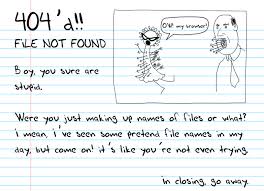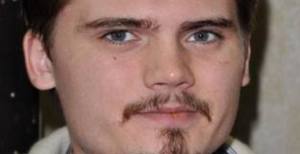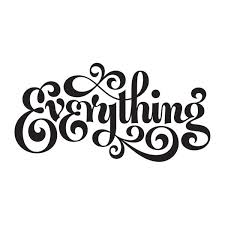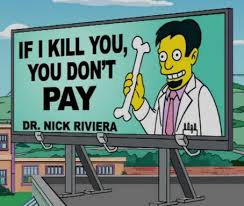As promised in my last post, I have a new batch of resolutions in 2015. I apologize for a post that’s just a list of stuff I’m hoping to do this year, but “publishing” is one of my keys to successful resolution keeping, so I’m hoping my reader(s) will help keep me honest. Having learned from last year’s failures, I’ve set up a system of tracking everything weekly, and I’ve also set up a grading scale to determine success and failure. The way it works varies a bit from goal to goal, but I’ve set up a pretty sweet spreadsheet to track everything, so I should have a good view of where I stand at any point in time (and can presumably come up with interesting trends and stuff). There are a few new ones, but many of the resolutions are extensions of last year’s successes.
Generally, I’d say the theme for 2015 is productively using my time. Since I’ll be funemployed on Thursday, I should have plenty of time to spend on fitness and hobbies and the like. The plan for my funemployment (and perhaps my first resolution) is to work 5 75-minute chunks, separated by at least 15-minute breaks, 5 days per week (for a total of about 30 hours per week) on my main project, and a sixth day hopefully on some personal project (may be a Coursera course or a stupid app I want to build). The breaks will be great time to work on some of these goals — getting in a solid 15 minutes of juggling, or a workout, or what have you. I may need to revisit these if I end up getting another job, but I think these goal are tractable through at least the first half of the year.
Without any further ado, I give you my resolutions for 2015.
Up by 6:00 4 times / week
I can make it easier to maximize productive time by maximizing awake time. Note that I can also take naps between my 75-minute blocks. I’ve both made this stricter and more relaxed than last year’s “into the office by 8” rule; on the one hand, I’ll be getting up earlier, but on the other hand it’s only 4x per week, plus I can do whatever I want (see “naps,” above) for the day after I get up. Another more relaxed aspect of this is that I am in complete control and won’t miss a week if, e.g., I get stuck in traffic.
Grading Scale: A: 45 weeks; B: 42 weeks; C: 38 weeks; Failure: 35 weeks
Fitness
Work Out 5 Times / Week
Same as last year; I felt that was a good number. I have some more pointed goals in 2015, though. See below.
Grading Scale: A: 50 weeks; B: 47 weeks; C: 45 weeks; Failure: 42 weeks
25,000 Push-Ups (2015 Total)
I said I’d have weekly goals; this one is a bit weird. It’s 500 push-ups (100 push-ups, 5x) per week * 50 weeks, but I’m counting a weekly success as being on target by Saturday of that week. E.g., if that Saturday is the 100th day of the year, I should have done 25,000 * (100 / 365) = ~6850 push-ups by then. This allows me to get ahead or behind, rather than doing exactly 500 push-ups in any given week, which if anything makes it a bit more relaxed than just doing 500 per week, since I’m more likely to get ahead than behind.
Grading Scale: A: 48 weeks; B: 45 weeks; C: 42 weeks; Failure: Not completing 25K
12,500 Pull-Ups (2015 Total)
Same metric as the push-ups, but 50 per day, 5 days per week. I think this will be much harder than the push-ups… especially if I don’t join a gym.
Grading Scale: A: 48 weeks; B: 45 weeks; C: 42 weeks; Failure: Not completing 12.5K
Run + Row 10 Miles / Week
This should establish a good baseline cardio regimen; it’s more than I probably did last year, and it’s relatively easy, since my apartment has treadmills. It’s also going to be the easiest to do on vacation, etc., since it’s pretty much always possible to run.
Grading Scale: A: 50 weeks; B: 48 weeks; C: 45 weeks; Failure: 42 weeks
1 Hour of Yoga
This will be pretty difficult, since I will basically have to teach myself yoga. Also, I’m very inflexible. But that’s exactly the point, so I’ll need to do this. I’m guessing I’ll end up doing 15-minute stretches right after I wake up or something.
Grading Scale: A: 48 weeks; B: 45 weeks; C: 42 weeks; Failure: 40 weeks
“Fast” 5 Days / Week
I heard on a podcast recently that a study suggested that mice are protected from obesity, diabetes, and a host of other lifestyle diseases if they just don’t eat during a 12-hour window, 5 days / week, so in the dumbest possible way, I’m going to try that out. I’ll wait until February, since January will see a lot of lifestyle changes anyway, then I’ll stop eating between 9:30 PM and 9:30 AM Sunday night – Friday morning and see how it goes. If successful, I’ll switch to 7:00 PM – 7:00 AM for the first four weeks in March and compare; if it’s unsuccessful in February and March, I’ll stop doing it altogether. “Success” will be determined by weight and body fast measurements.
Grading Scale: A: 40 weeks (or no change after 8 weeks) ; B: 38 weeks; C: 35 weeks; Failure: 30 weeks
Communication
Contact 1 Out-of-Town Friend / Day
Same as last year; that went really well, and I don’t want to stop that. But I’ve added in a few others (that’s why it gets its own category!). Also, I’m formalizing that I cannot repeat people within a week. “Success” for a week means not missing any days.
Grading Scale: A: 48 weeks; B: 45 weeks; C: 42 weeks; Failure: 40 weeks
Contact 1 Still-Employed Ex-Coworker / Week
This should give me a way to keep in touch with the folks at my old job. If the ones I tend to talk to all end up leaving, I may have to revisit. I’m also excluding people I would talk to normally anyway, and I’m saying that I cannot repeat people within a given month.
Grading Scale: A: 48 weeks; B: 45 weeks; C: 42 weeks; Failure: 40 weeks
Call 1 Friend / Week
I hate calling people, but the number of people I’ve promised to call (and subsequently not called) is embarrassing and awful. I intend to fix this by calling a few people (mostly the ones I promise to call and don’t) more frequently. Same rule here — cannot repeat a name within a given month.
Grading Scale: A: 48 weeks; B: 45 weeks; C: 42 weeks; Failure: 40 weeks
Hobbies
Practice Music 3 Hours / Week
Given my newfound time, I’m increasing this by an hour per week.
Grading Scale: A: 48 weeks; B: 45 weeks; C: 42 weeks; Failure: 40 weeks
Juggle 60 Minutes / Week
I want to be able to juggle 4 balls and pins. I’m hoping if I spend an hour a week juggling, I can probably manage it. This should be a great way to spend my 15-minute breaks.
Grading Scale: A: 48 weeks; B: 45 weeks; C: 42 weeks; Failure: 40 weeks
Practice Sleight of Hand 1 Hour / Week
I’d like to be able to do stupid card / coin tricks. My brother’s been married for awhile, so I could be an uncle like… any time, with no warning. Better get practicing.
Grading Scale: A: 48 weeks; B: 45 weeks; C: 42 weeks; Failure: 40 weeks
Volunteer 2 Hours / Week
Really this is “Volunteer 8 Hours / Month.” I never volunteer, but now that I have time, I should be able to give it freely toward something interesting. I’m hoping I can land a volunteer job doing something awesome like hunting snakes in Florida or cataloguing fossils at the natural history museum, but I have yet to explore opportunities.
Grading Scale: A: 25 weeks; B: 23 weeks; C: 21 weeks; Failure: 20 weeks
Practice Speed Reading 1 Hour / Week
I’m a crazy slow reader; if I spend some time addressing this, I think I could make some good progress, and it’d be a huge boon to my productivity generally.
Grading Scale: A: 48 weeks; B: 45 weeks; C: 42 weeks; Failure: 40 weeks
2 Blog Posts / Month
I’ve enjoyed writing this blog, but it’s a killer on Saturdays, and — let’s face it — I often have nothing worthwhile to say. I’m going to scale back and try to come out with more interesting things to say less often. I don’t promise that they’ll be interesting, but the bar wasn’t exactly super high to begin with…
Grading Scale: A: 25 weeks; B: 23 weeks; C: 21 weeks; Failure: 20 weeks
It’s gonna be a long year*, but I imagine it’ll fly by. Hopefully this time next year I’m celebrating by writing a blog post about my hugely successful magic show / yoga / rock concert New Years Eve performance extravaganza.
*Statistically, slightly shorter than average, actually.
 > Settings > Show advanced settings… > Privacy > Click Clear browsing data… then select “Cached images and files” (and probably nothing else) and clear the browsing data. If you don’t have Chrome, try it out. It’s great? Or just move on with your life; what I’m posting probably isn’t that worthwhile anyway.
> Settings > Show advanced settings… > Privacy > Click Clear browsing data… then select “Cached images and files” (and probably nothing else) and clear the browsing data. If you don’t have Chrome, try it out. It’s great? Or just move on with your life; what I’m posting probably isn’t that worthwhile anyway.






















